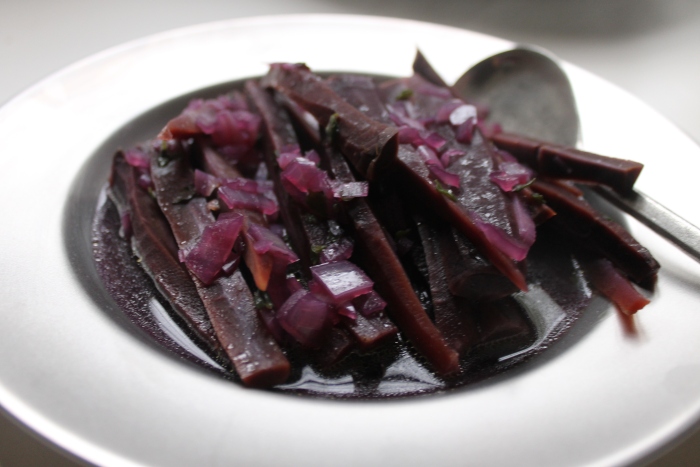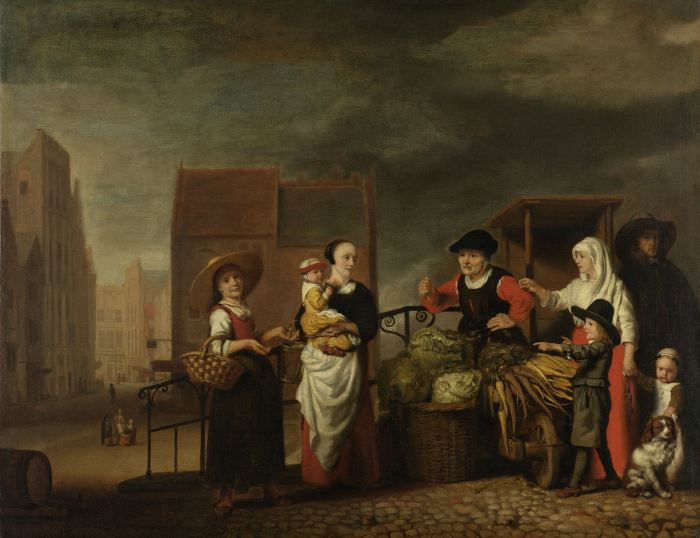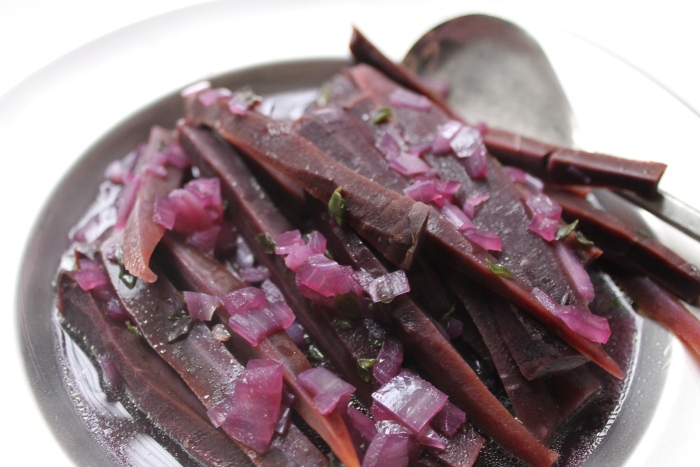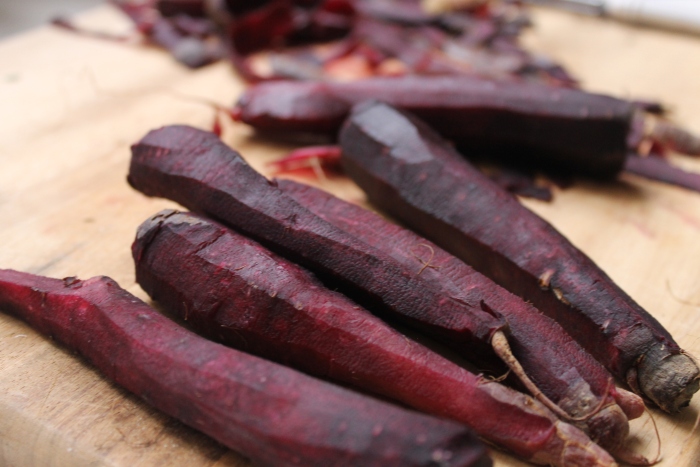
Purple carrots have been undergoing something of a renaissance in the last couple of years, and you may well have seen them at your local farmer’s market or even in the supermarket. If you have, then you’ve probably also heard that purple carrots are the original colour. It’s true that the earliest domesticated carrots were probably purple or yellow in colour, but purple was one of just several colours available until the 17th century[1]. The rise of the sweeter, orange carrot in the 17th century meant that the white, yellow, red and purple varieties fell out of favour until their hipster return in the 2000s.
With their deep and unusual colouring, these stewed purple carrots seemed like the perfect candidate for the HFF ‘Pretty as a Picture’ challenge! The recipe comes from a receipt book held by the Wellcome Library (I originally found the recipe on http://www.carrotmuseum.co.uk/history3.html). It is signed Elizabeth Jacob and has a date of 1654, but there are lots of different handwritings evident, so some of the recipes are later, probably up to about 1685[2].
The Recipe

“To Stew Carrets” – recipe from Jacob, “Physicall and Chyrurgicall Receipts. Cookery and Preserves.,” 103. Via the Wellcome Library, used under Creative Commons, Public Domain Mark 1.0
To Stew Carrets
Take your carrets and cute them in long little pieces, and take a pretty many onions and cut them small. A bunch of sweet hearbes, a little whole peper and a little nutmegg, and put as much water as will cover your sauce pan. A good piece of butter cover them close and sett them on a slow fire Stire them some times, and when they are enough serve them.[3]
Given the date of this recipe, they may not have been using purple carrots, because they were already losing out to the more popular orange carrots. That being said, you do get depictions of purple carrots well into the 17th century (see Nicholaes Maes’ market scene below).
[1] Stolarczyk and Janick, “Carrot: History and Iconography.”
[2] Wellcome Library, “Jacob, Elizabeth (& Others).”
[3] Jacob, “Phyiscall and Chyrurgicall Receipts. Cookery and Preserves.,” 103.

Vegetable Market, Nicholaes Maes, 1655-1665. [Public Domain] via Rijksmuseum.
The Redaction
Stewed Carrots
1 small bunch of carrots, sliced into long pieces (julienned perhaps?)
1/2 onion, chopped small
A knob of butter, around 15g
Sprinkle of nutmeg
Black pepper
Thyme or other herbs to taste
- Place all the ingredients into a saucepan. Add enough water to just cover them, put a lid on the saucepan and cook over a medium heat for 10-15 minutes or until just soft. Serve hot.

The Round-Up
The Recipe: To Stew Carrets from Physicall and chyrurgicall receipts. Cookery and preserves. (available at http://wellcomelibrary.org/item/b19263302#?c=0&m=0&s=0&cv=217&z=0.3438%2C0.3634%2C1.1627%2C0.7284&r=180 pg. 103).
The Date: 1654-1685
How did you make it? See above.
Time to complete?: 20 mins.
How successful was it?: The carrots looked really pretty but I added too much thyme and they had a very savoury, meaty smell which put me off a bit although they actually tasted OK.
How accurate?: I think it’s maybe unlikely at this date that they would have been using purple carrots, although it’s hard to know because the exact process and timeline for the takeover by the orange carrot is unclear. That was something that only became clearer after I had actually made the dish. Other than that, it’s mostly a matter of which herbs they would have used and I imagine that depended very much on what was fresh and available whenever you were making them.

References
Jacob, Elizabeth and others. “Phyiscall and Chyrurgicall Receipts. Cookery and Preserves.,” c.1654-1685. Wellcome Library. http://wellcomelibrary.org/item/b19263302#?c=0&m=0&s=0&cv=217&z=-0.761%2C-0.0283%2C1.1111%2C0.9916&r=180.
Stolarczyk, John, and Jules Janick. “Carrot: History and Iconography.” Chronica Horticulturae 51, no. 2 (2011): 13–18.
Wellcome Library. “Jacob, Elizabeth (& Others).” Wellcome Library. Accessed April 5, 2016. http://wellcomelibrary.org/item/b19263302#?c=0&m=0&s=0&cv=0.